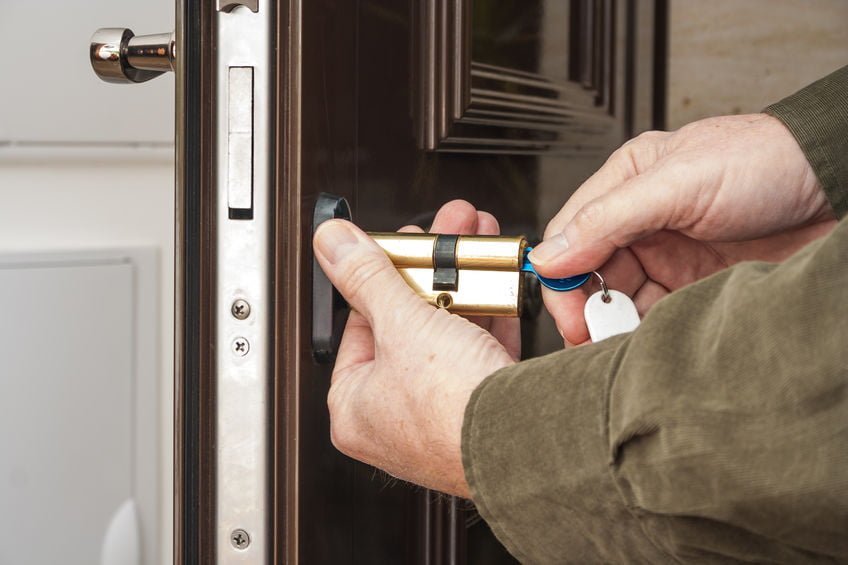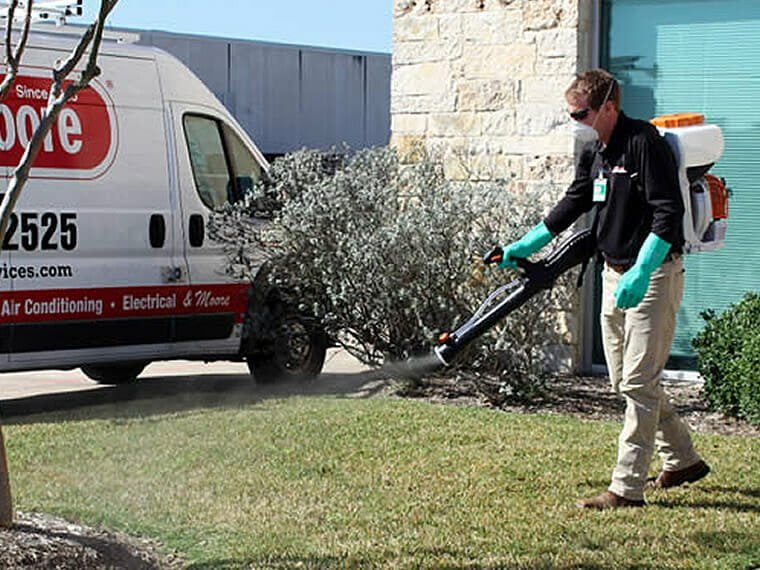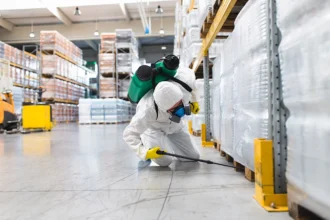Cockroaches and palmetto bugs are two typical household pests that can be challenging to eradicate. Cockroaches are the most prevalent pest that homeowners face, with 98% of pest experts treating them, according to a recent poll by the National Pest Management Association.
The American cockroach, or palmetto bug, is a prevalent pest in the southern United States. Both of these unwanted critters can disrupt human life and can be dangerous to our health. This article will compare and contrast palmetto bugs with cockroaches, as well as describe the most efficient methods for eliminating each.

Differences Between Palmetto Bugs and Cockroaches
Although they share the order Blattodea with cockroaches, palmetto bugs and cockroaches are quite different in appearance, habitat, behavior, and habits.
Appearance and Size
Large and reddish-brown in color, palmetto bugs are a type of cockroach. They feature lengthy antennae, spiny legs, and wings that cover their entire body and can grow to a length of 2 inches. Cockroaches, on the other hand, come in a number of varieties; the German and American cockroaches being the most frequent.
The typical length of a German cockroach is around an inch and a half. They have a light brown color with two prominent stripes. American cockroaches, also called water bugs, are up to 1.5 inches in length and have a reddish-brown coloration.
Habitat and Distribution
Florida, and the rest of the southeastern United States, is full of palmetto bugs. They are common in buildings and residences, especially in dark, damp places like cellars, kitchens, and bathrooms.
In contrast, German cockroaches can be found just about anywhere thanks to their affinity for metropolitan environments and the food and water sources they provide. Similarly, American cockroaches may be found all around the world and prefer warm, damp places like sewers, basements, and boiler rooms to live in.
Behavior and Habits
Often active at night, palmetto bugs are drawn to the bright illumination. They can use their wings to go to the air and use this skill to their advantage when evading predators or looking for food. They are opportunistic eaters who will eat almost anything, including garbage, dead insects, and even their own feces. The German cockroach is similar to the American cockroach in that it is nocturnal and spends the day hiding.
The presence of heat, moisture, and food encourages their rapid reproduction. Like European cockroaches, American cockroaches are active at night and will eat nearly anything (including human and animal waste, pet food, and paper). They can go for up to a week without water and have been known to survive for weeks without eating.
Why Palmetto Bugs and Cockroaches are Hard to Kill
Both palmetto bugs and cockroaches are infamous pests that can be difficult to eradicate due to their resistance to insecticides and their ability to quickly adapt to new environments.
Adaptability and Resilience
The evolution of palmetto bugs and cockroaches has made them exceptionally adaptive to new surroundings. They are immune to high heat, dry conditions, and even radiation.
It is difficult to starve them out of a region because they can survive for long periods of time without food or water. These pests can also learn to evade traps and insecticides, demonstrating a remarkable capacity for adaptation.
Reproduction and Population Growth
Cockroaches and palmetto bugs have a high reproductive rate, with females producing hundreds of offspring throughout the course of their existence. This means that even if a large percentage of the population is eliminated, the survivors will swiftly repopulate the area. These pests also tend to congregate in great numbers, called colonies, making it more difficult to eradicate them all at once.
Hardiness and Resistance to Insecticides
Cockroaches and palmetto bugs are resistant to insecticides thanks to their tough exoskeletons. Due of their prolonged contact with insecticides, they have become immune to several of the most widely used varieties. Hence, spraying the same insecticides repeatedly can lead to resistance, making population management much more of a challenge.
How to Get Rid of Cockroaches and Palmetto Bugs
Prevention Methods
- Do your best to maintain a spotless, clutter-free house.
- Don’t leave your pet’s food out alone and be sure to keep it in an airtight container.
- Close up any openings in the walls, floors, and ceilings.
- Stop moisture buildup by sealing off any leaking faucets or toilets.
- Take trash and waste out on a regular basis.
Chemical Treatments
- To get rid of cockroaches and palmetto bugs, use insecticide sprays, baits, or powders made for these pests.
- Set up sticky traps in frequented spots.
- To have stronger poisons applied, call in a professional exterminator.
Natural Remedies and DIY Solutions
- Sprinkle boric acid powder into gaps and cracks to exterminate cockroaches.
- Place a mixture of baking soda and sugar, in equal parts, in roach-infested regions.
- Spraying roaches with a solution of water and soap will cause them to suffocate.
- If roaches are a problem, try sprinkling cucumber slices or bay leaves around the area.
- Get rid of roaches and their eggs by vacuuming the area thoroughly.
Analyzing the Efficacy of Several Techniques
Pros and Cons of Each Method
Prevention Method
Pros:
- Affordable and kind on the planet.
- Perhaps mitigates the occurrence of infestations.
- Mostly harmless to people and animals.
Cons:
- If infection already exists, it will not be effective.
- Maybe labor-intensive, necessitating the steady application of effort.
Chemical Treatments
Pros:
- Palmetto bugs and cockroaches are no match for its lethality.
- Effective quickly and can ease the pain right away.
- Often sold without a prescription.
Cons:
- If not utilized properly, it can be harmful to humans and animals.
- It’s possible that not all of the pests will be eliminated.
- Insects can evolve to become immune to pesticides.
Natural Remedies and DIY Solutions:
Pros:
- In most cases, it’s harmless.
- It’s common and inexpensive.
- May serve as an efficient insecticide and repeller.
Cons:
- Perhaps less efficient than chemical remedies.
- Maybe longer time to effect.
- It could take additional time and energy.
Factors Affecting Success Rate
There are a variety of variables that can affect a technique’s success rate.
- How bad is the infestation
- Insect genus or species.
- Where the infestation is taking place.
- The efficiency of the chosen treatment.
- The perseverance and hard work placed into treatment and prevention.
Best Practices for Using Each Method
Prevention Methods:
- Maintain a tidy home by cleaning and decluttering on a regular basis.
- Closing off any potential entryways is a good idea.
- Put dry goods and pet food in containers that can’t be opened easily.
- Maintain consistent garbage disposal.
Chemical Treatments:
- Please read the product’s instructions thoroughly before using it.
- When working with chemicals, it’s important to use protective gear like gloves and a face mask.
- Concentrate your efforts where you’ll have the most success.
- If the infestation is particularly bad, you may want to hire a professional exterminator.
Natural Remedies and DIY Solutions:
- Combine treatments for optimal efficacy.
- Put treatments where you think the insects are most likely to show up.
- Boric acid and other dangerous compounds should be handled with care.
- Natural therapies may take longer to take effect, so be constant and patient.
Frequently Ask Questions
What are palmetto bugs?
Palmetto bugs, or the American cockroach, are a species of cockroach. They flourish in the south of the United States and other places with warm and humid weather.
How do I know if I have a palmetto bug or a cockroach infestation?
Palmetto bugs and cockroaches have a lot of similarities, making it difficult to tell them apart. Palmetto bugs are cockroaches, but they’re bigger and their hue is more of a reddish brown than the typical black or brown. Cockroaches tend to be more diminutive and darker in coloration.
Why are palmetto bugs and cockroaches considered pests?
Cockroaches and palmetto bugs are regarded as pests due to the health risks they provide to humans through disease transmission, food contamination, and allergic reactions.
Are palmetto bugs or cockroaches harder to get rid of?
Palmetto bugs and cockroaches have similar resistance to treatment, making eradication tricky in some cases. Since palmetto bugs tend to be larger, they may be more difficult to eradicate and call for more extreme measures.
What are some prevention methods for palmetto bugs and cockroaches?
Maintaining a clean and clutter-free house, using airtight containers to store food, repairing any gaps or fractures in doors and windows, and routinely disposing of trash and waste are all effective preventative measures.
What are some chemical treatments for palmetto bugs and cockroaches?
Insecticides can be applied chemically in the form of sprays, baits, or powders. Use with caution and strictly per the guidelines provided for the best results.
When should I consider hiring a professional exterminator?
Consider calling a professional exterminator if you have a serious infestation or have tried treating the problem yourself without success. They can aid in the prevention of new infestations and give more potent therapies.







